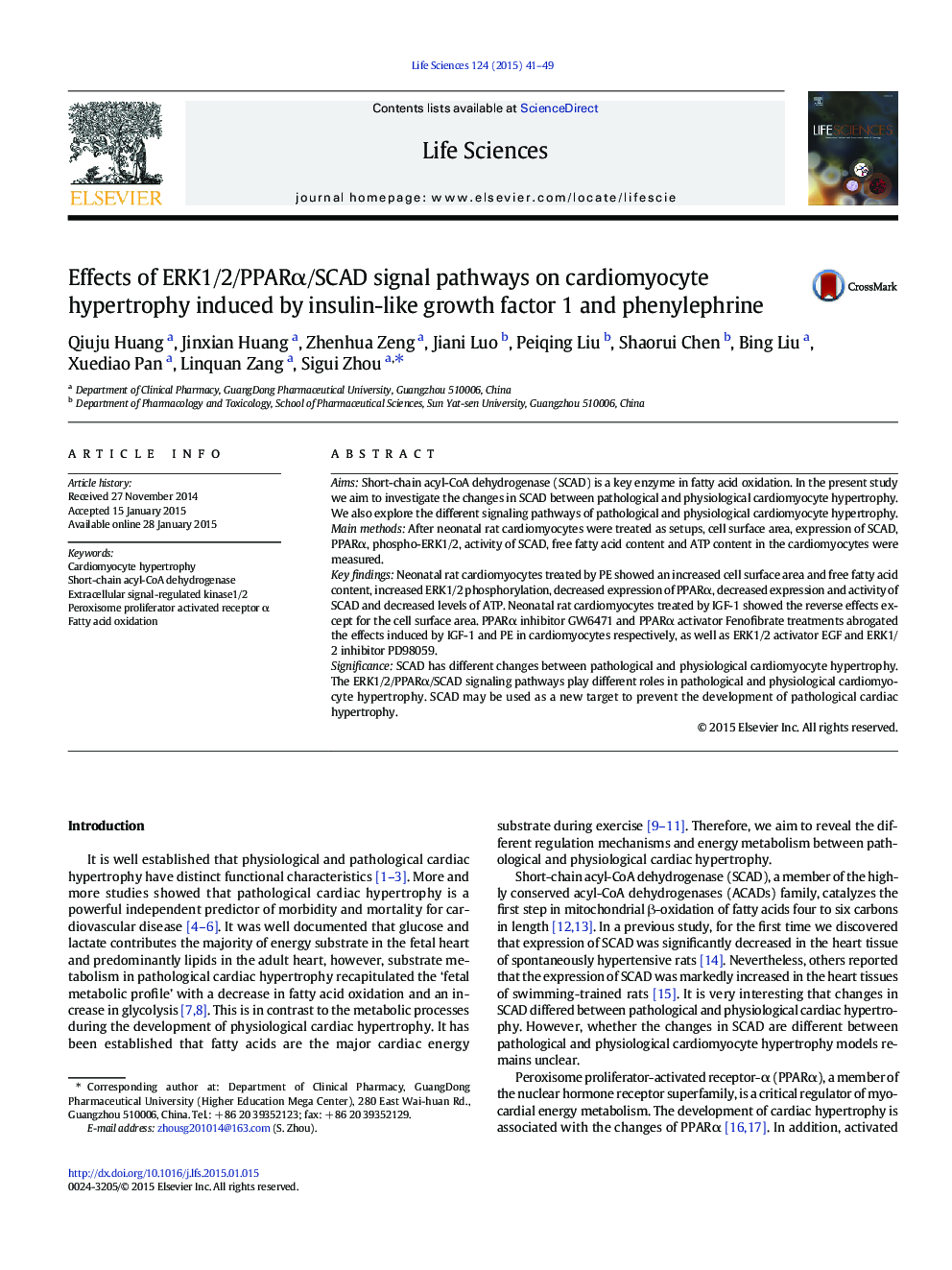| Article ID | Journal | Published Year | Pages | File Type |
|---|---|---|---|---|
| 5841727 | Life Sciences | 2015 | 9 Pages |
AimsShort-chain acyl-CoA dehydrogenase (SCAD) is a key enzyme in fatty acid oxidation. In the present study we aim to investigate the changes in SCAD between pathological and physiological cardiomyocyte hypertrophy. We also explore the different signaling pathways of pathological and physiological cardiomyocyte hypertrophy.Main methodsAfter neonatal rat cardiomyocytes were treated as setups, cell surface area, expression of SCAD, PPARα, phospho-ERK1/2, activity of SCAD, free fatty acid content and ATP content in the cardiomyocytes were measured.Key findingsNeonatal rat cardiomyocytes treated by PE showed an increased cell surface area and free fatty acid content, increased ERK1/2 phosphorylation, decreased expression of PPARα, decreased expression and activity of SCAD and decreased levels of ATP. Neonatal rat cardiomyocytes treated by IGF-1 showed the reverse effects except for the cell surface area. PPARα inhibitor GW6471 and PPARα activator Fenofibrate treatments abrogated the effects induced by IGF-1 and PE in cardiomyocytes respectively, as well as ERK1/2 activator EGF and ERK1/2 inhibitor PD98059.SignificanceSCAD has different changes between pathological and physiological cardiomyocyte hypertrophy. The ERK1/2/PPARα/SCAD signaling pathways play different roles in pathological and physiological cardiomyocyte hypertrophy. SCAD may be used as a new target to prevent the development of pathological cardiac hypertrophy.
